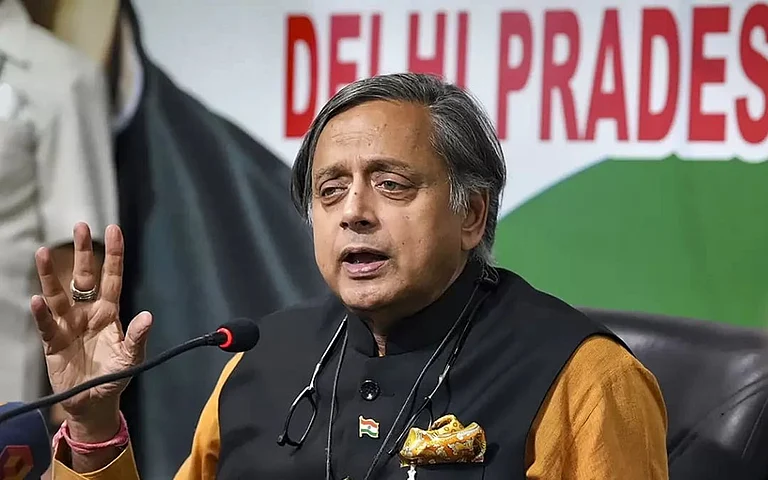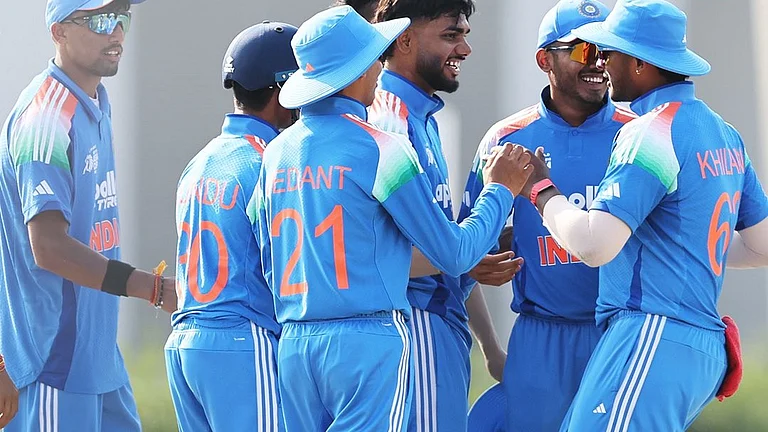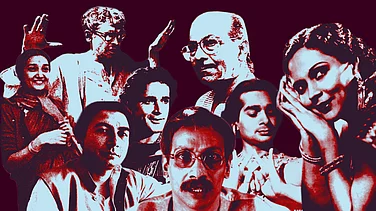When Annette saw her first Indian film, she was stunned. She felt it was all like magic. Instantly, she felt the urge to be a part of that magic. Many times after that first time, Annette slipped away from home at great risk to see the magic, till one day she saw the shooting of a film in which she saw Sulochana for the first time. “Oh, she was so beautiful! When she came down the steps, I almost lost my heartbeat. She was like an angel, a goddess coming down from heaven.”
Ali Peter John, ‘Azurie Danced as if Possessed’ Screen, February 29, 1980
The year is approximately 1929. The angel is Sulochana, reigning screen goddess of the times, glamour incarnate. Annette is a young, mixed-race woman, longing for a life of freedom and beauty away from the strict discipline of her parents. She has little patience for the ‘respectable’ jobs young, middle class women pursue, like nursing and stenography. Cinema offers her something else. A unique promise of self-transformation. In the decades that follow, Annette remakes herself into Madam Azurie, one of the first dancer-choreographers of Bombay cinema.
We all know that cinema moves us—to tears, to laughter or into a state of reverie. But cinema can also transport the spectator from the theatre into the studio. Movies can literally put people to work. The fan’s drive to remake herself as a star points to a complex history of urban work, aspiration for social mobility and the dream of a creative life.
Cinema has always meant more than the image on the screen; for thousands of people across the world, cinema has historically offered a profession and a passion. Dreaming in the city of Nagpur, a young Kishore Sahu (actor, director, producer) longed for a future in film: “I had made up my mind. Just after submitting my last B.A. exam answersheet, I left for Bombay. I could not wait for the result.” The legendary director, Mehboob Khan, remembers being a film aspirant since his early childhood: “Before I could learn a bit of Gujarati and Urdu, I was overwhelmed by a strong desire to join the movies.” Meanwhile, around 1935, two sisters, Ishrat and Roshan Jehan, received an autographed portrait from one their favourite actresses in Pune. Roshan was so thrilled that she decided to get her own portrait taken at a photo studio and sent it back to the actress, requesting a job at her studio—and she got it! Journeys such as these, repeated over and over, present a snapshot of the itinerary of the film fan who transitions to a worker-practitioner.

The fan-as-worker embodies cinema’s drive to socially reproduce its own labour force and, as such, offers important insights into the organisation and operation of media industries. In the academy, the fan continues to be seen in limited ways, only visible if she practices legibly fan-like activities. The adoration of stars, unruly behaviour in cinema halls, scrapbooking or writing fan letters are practices that conform to stereotypes about fandom. But the fan inspired by her screen goddess to mimic her starry journey is a boundary-crossing figure who short circuits the orderly flow of social energies. The fan-as-worker exceeds the boundaries of legible social identities and links the spheres of production and reception.
In the 1930s, Bombay cinema offered unprecedented opportunities for work at a time of grave unemployment. Following the US Depression and the colonial government’s lackadaisical approach to investment in Indian industry, unemployment in British India reached crisis-level proportions. Actress and political writer, Shanta Apte, noted in her polemical text Zaau Mi Cinemaant? (Should I Join The Movies?) (1940) that “the searing fire of joblessness” had contributed to a surge in interest in film work: “Young people found themselves in a situation where they only had thorns for food, and a line of unemployed youths turned up at the door of the film industry” (translations courtesy Wandana Sonalkar).
But where exactly was this legendary ‘door of the film industry’? Not contained within one studio or office, the film industry was, and continues to be, a dispersed ecology with many tangled itineraries of formal and informal labour. If we track the geographies of film-making practices—of studios, canteens, dubbing suites, gyms, cafes, talent agencies, tailor shops, union offices—we will end up with a map of Bombay city itself. In many ways, iconic film cities such as Mumbai and Los Angeles also constitute the ‘industry,’ a nebulous and shape-shifting industrial-cinematic organism.
A poignant manifestation of this idea can be seen in this news report from 1935: “Lured by prospects of finding employment in film companies in Bombay, two boys left Gorakhpur in northern India some days ago. Arriving in the city on Thursday last, they wandered through the streets in search of employment.” The boys had childishly thought that Bombay city was one big film studio and landed up without any concrete address in hand. Is it possible to see their mistake as an intuitive knowledge instead? Isn’t Bombay still shorthand for cinema?

What happens to such aspirants, fans who want to become film practitioners? Well, the first default step is to become a struggler and most aspirants remain strugglers all their entire lives. The word ‘struggler’ means something so specific in Bombay that it is no longer seen as an English word, having become a part of the hybrid lexicon that is called ‘Bambaiyya.’ The struggler is a very specific social figure, someone who aspires to make a name in the movie business but who has no insider contacts or social connections. On the streets of Bombay today, struggle is a badge of honour, a code word legible to a wide community of the new precariat, who read it as respect for the daily hustle of surviving in an over-populated, competitive environment. In this context, the struggle is both a response to and symptom of the many precarities that continue to mark media industries today.
The struggler is a bit of a gambler, with eyes always set on the future. Madan Mohan, one of the most renowned music directors of Hindi cinema, personified this future-oriented attitude of the struggler. Even though his father, Rai Bahadur Chuni Lall, was a co-founder of the famous Bombay Talkies studio, Madan knew that his father would never support his film career dreams. In 1944, while serving as an officer in the British Indian Army, a twenty-year-old Madan wrote a letter to the star actress and producer Devika Rani, a colleague and friend of his parents: “This is the first time I am going to tell you. My interest is in your industry, it always has been, and if ever I had any talents, it was for this industry. I shall join it as soon as I can, and if nobody takes me up, I will work as an extra and show my talents” (Dietze Family Archive). Mingled in with its bravado, the letter reveals an acute awareness that the struggle was long and uncertain.

Though strugglers have their eyes on the horizon, they are committed to preparing the grounds for the present. Since waiting and preparing for future success are continual processes, the struggler has a very different relation to late industrial capitalist time as compared to a factory or office worker. There is little separation between time for work, leisure, and self-care, a phenomenon becoming painfully familiar to us today in the new ‘creative’ economies of global capital. The cultural worker today is interpellated by what Angela McRobbie terms a dominant ‘creativity dispositif,’ an ideological apparatus that enables, even validates, the current precaritisation of cultural work by privileging ideas of creative genius and artistic satisfaction in opposition to demands for job security, regulated work hours, or health insurance. While freelancing in the gig economy is a necessity for most young media workers, it is overwhelmingly framed as a choice.
Thinking through these ideas in the context of the film struggler in the archive of Bombay cinema, we recognise a similar impulse to normalise, even romanticise precarity by framing insecurity as part of the adventure. When Madan Mohan invokes the language of talent, ability, and pride, he participates in this emerging cultural narrative that is today termed the ‘hustle.’ At the same time, we would be deeply mistaken if we were to frame the desires of the fan-as-worker and the struggler as simply delusional. There is love here, a deep love for cinema and everything that symbolises it. What is often missing, however, is a recognition that love can also be labour.
Just like the city, which continues to expand and make space for people and their desires against the grim urgency of rising sea levels, Bombay’s film practitioners have stayed with the trouble. Those troubles may include surviving a pandemic, surviving financially, or even surviving the intense hate drummed up against the Hindi film industry in certain circles. The daily struggle of film fans, extras, and assorted cine-workers is a determined effort to make meaning of our fragile lives in fragile times. Thus, when an actor says to a casting director that “struggle jaari hain,” he confirms that giving up is not an option, the struggle goes on.
Debashree Mukherjee is associate professor of Film and media at columbia university, New York City





















